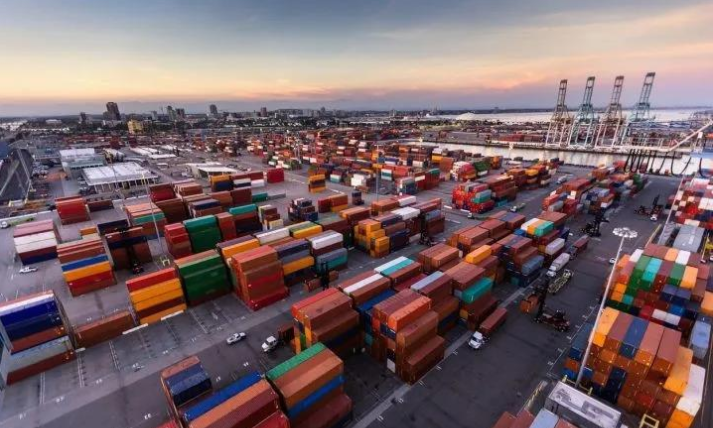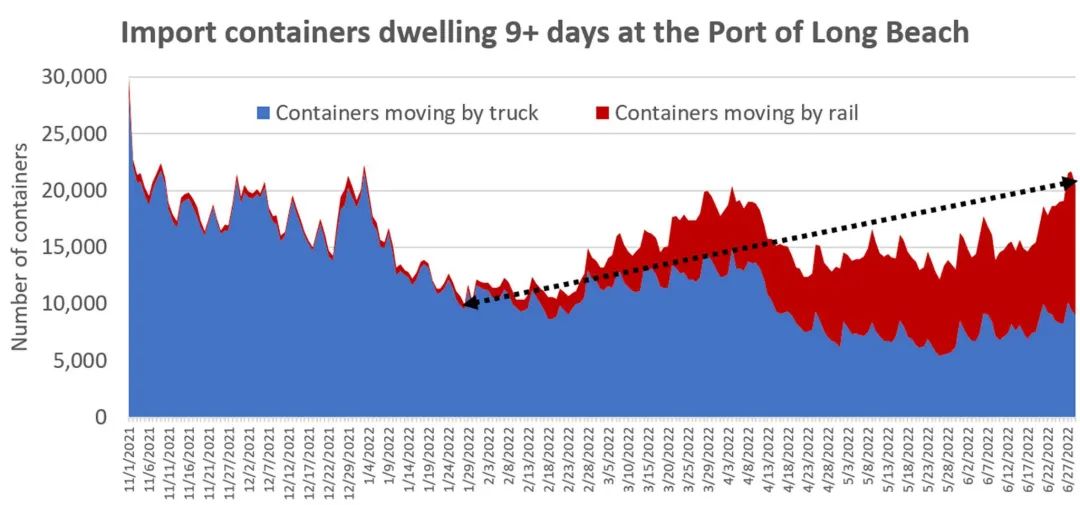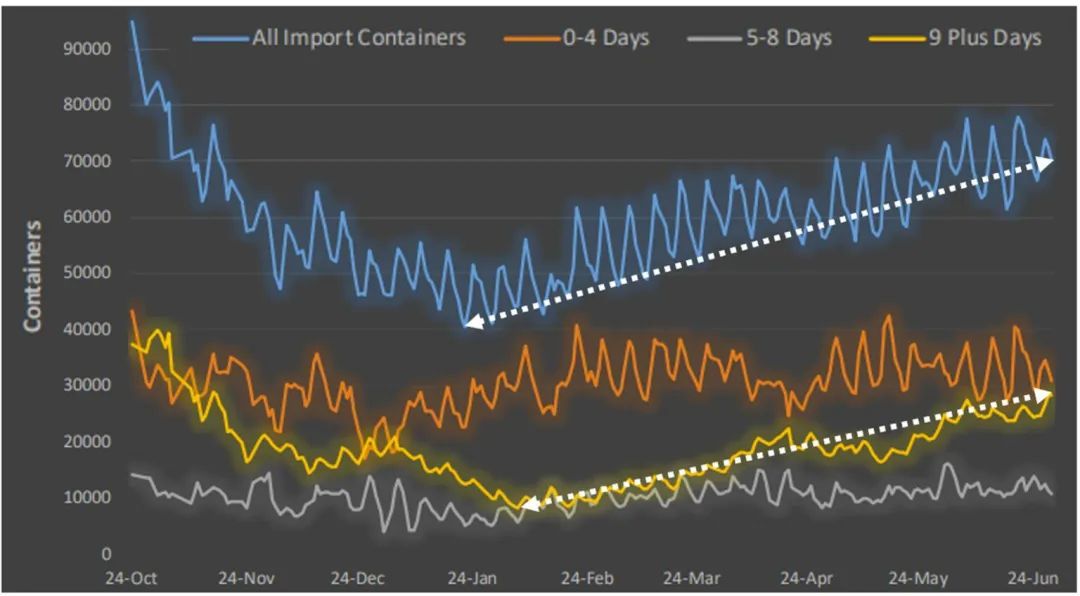The ports of Los Angeles and Long Beach introduced a controversial demurrage fee for containers that have been sitting in terminal yards for too long, as last year's Christmas season nearly collapsed U.S. logistics supply chains.

But the charge is more of a threat to urge containers that have been stranded at the terminal to be removed as soon as possible, with the port reporting progress weekly and continuing to defer the charge.
But now, with the increasing number of containers at the terminal, will this charge be put on the agenda again?
- Port of Los Angeles/Long Beach has doubled long-detention containers -
The Ports of Los Angeles and Long Beach said the collection of demurrage charges has been delayed again as the total number of containers at long-term terminals has fallen by 31% since the end of October. But to put that in perspective, the volume of imported containers staying at these two ports for nine days or more has more than doubled since the beginning of February this year, reaching 48,932 as of Wednesday, compared with the volume on November 15 last year. (48905) quite.
Maersk has warned in recent days that the likelihood of ports implementing the fee has risen sharply. Although it did not actually happen, some media said that the fee will be re-evaluated every week and may be implemented at any time.
-Situation of stranded containers at the Port of Long Beach-
The proposed fee would be for truck-loaded import containers that stay at the terminal for nine days or more and rail-to-rail containers that stay six days or more. The Port of Long Beach publicly disclosed data on imported containers that stayed nine days or more, categorized by truck and rail, but did not include rail containers that stayed 6 to 8 days.
As of Wednesday, 20,501 containers were stacked at the Port of Long Beach's cargo terminal for nine days or more, including 11,509 by rail and 8,992 by truck. The Port of Long Beach noted that this number is down 22 percent from when it began compiling data on Oct. 28 last year, but is 25 percent higher than the 16,398 on Nov. 20 of last year, set on Jan. 28 of this year. More than 2x the 9928 low.

Data from the Port of Long Beach shows that truckloads of stranded containers are about half what they were seven months ago. By contrast, rail shipments of containers are piling up and have been rising since March.
-Situation of stranded containers at the Port of Los Angeles-
As of Wednesday, 70,290 import containers were stacked at the Port of Los Angeles' terminals, a 26 percent drop from last year's Oct. 24, the day before the tariff plan was announced. Of these, 28,431 containers stayed nine days or more, down 24% from October 24 last year.
But at the end of January, only about 40,000 import containers were stacked at the port, and the number is now up 76 percent. At the beginning of February, about 10,000 containers were at the Port of Los Angeles for nine days or more, almost a third of the current level.

-Railway container situation-
Like the Port of Long Beach, rail delays are a major cause of container buildup at the Port of Los Angeles. On Wednesday, 17,010 (60% of the total) of containers that stayed nine days or more were awaiting rail loading. Of all import containers stacked at the terminal, 28,984 (41% of the total) were rail containers.
Port of Los Angeles Chief Executive Gene Seroka said in a recent news conference that the terminal typically has about 9,000 rail containers piling up, less than a third of the current total, and there are typically no rail containers that stay nine days or more. .
Rail freight volumes at the Port of Los Angeles have increased sixfold since February. Seroka said the port is going all out to speed up rail packing.
Previous:The backlog of ships in the western US ports is reduced, and the landside traffic is still seriously
Next:Sea freight plummeting?